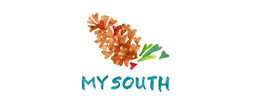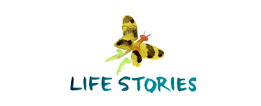Little Drummer Boy had his annual Thanksgiving program today complete with Pilgrim costumes, Native American headdresses, a tee pee and an alarming number of lyrics about chopping turkeys. Quiver was tied up with work, so it was just me and my favorite 4-year-old for lunch consisting of… turkey sandwiches. I must have heard “I love you, Mommy” 637 times and enjoyed it every time. I’m realizing that I say “I love you” to my gifts pretty often–with every available breath, actually. Now, I’m starting to get it back at me. Granted, sometimes it’s translated as “don’t spank me, Mommy,” but more often than not it signifies a grand old time.
All the Pilgrims and Indians today got me thinking. What’s a 12 Days of Thanksgiving without a little history? And, courtesy of the Starkville Public Library and LDB’s penchant for wanting to read the same book over and over (and over) again, I’ve learned a new little bit of history this year about the power of the pen.
A woman named Sarah Hale is credited with being the catalyst for the creation of a designated national day of Thanksgiving–the one we celebrate now on the fourth Thursday of November. We checked out a book from the library about her called Thank You Sarah, The Woman Who Saved Thanksgiving by Laurie Halse Anderson. It has great illustrations and a fun account of this unusual woman.
Sarah Hale was a writer and activist long before women even had the right to vote. She was a teacher, a poet, a songwriter (does Mary Had a Little Lamb ring a bell?) and a mom. She was also the editor of an influential women’s magazine–one of the first of its kind. She used that forum to lobby for any number of issues close to her heart. One of those issues was a national day of Thanksgiving. She first lobbied for the idea by challenging states to set aside a day. She succeeded, but every state had a different day. She felt there was value in creating a common day set aside for all Americans to give thanks. So, she began writing again–both columns in her magazine and letters and more letters. All in all, she spent 38 years writing letters and articles about Thanksgiving, including letters to five different presidents.
Finally, in 1863, when the country was in the midst of the bloody Civil War, she found someone who agreed that a national day of Thanksgiving could be a positive force in the American culture. On October 3rd of that year, President Abraham Lincoln delivered the first Thanksgiving proclamation.
What can I learn from history?
1. Sarah’s pen was indeed a powerful tool. And today, the pen is easier to wield than ever before with countless opportunities for “citizen media”– vehicles like blogs, social networking sites, email correspondence, and yes, the U.S. Postal Service still runs 6 days per week.
2. Sarah didn’t give up until her message was embraced–even after 38 years. It wasn’t enough for it to be heard. She was persistent until she convinced that one person who could make a difference.
3. The results had lasting power–so much so that a century and a half later President Barack Obama will make a Thanksgiving proclamation on Thursday, November 26th.
People with conviction can have a powerful impact if they choose to use their voices. Whatever I have to say, I better make it count.

 Hello & welcome! I’m Haley Montgomery, and I’m the designer and owner of
Hello & welcome! I’m Haley Montgomery, and I’m the designer and owner of 















